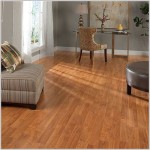Interlocking Carpet Tile Flooring: A Comprehensive Guide
Interlocking carpet tile flooring, also known as modular carpet or carpet squares, presents a versatile and practical flooring solution for a wide range of applications. From residential spaces to commercial environments, these tiles offer numerous advantages in terms of installation, maintenance, and design flexibility. This article provides a comprehensive overview of interlocking carpet tile flooring, exploring its benefits, installation process, material options, maintenance requirements, and cost considerations.
Benefits of Interlocking Carpet Tile Flooring
Interlocking carpet tiles offer a distinct set of advantages compared to traditional broadloom carpet or other hard surface flooring options. These benefits contribute to their growing popularity in both residential and commercial settings.
Ease of Installation: One of the primary benefits is the simplified installation process. Unlike broadloom carpet, which requires professional installation and specialized tools, interlocking carpet tiles can often be installed by homeowners or facility managers with minimal expertise. The interlocking mechanism allows tiles to be securely connected without the need for adhesives in many cases. This simplifies the installation process and reduces overall costs associated with professional installation.
Design Flexibility: Interlocking carpet tiles provide a high degree of design flexibility. The modular nature of the tiles allows for the creation of custom patterns, borders, and color combinations. This flexibility enables designers and homeowners to personalize their flooring to match their specific aesthetic preferences and functional requirements. Individual tiles can be easily replaced or rearranged to create new designs or address wear and tear in high-traffic areas.
Easy Maintenance and Replacement: Maintenance of interlocking carpet tiles is simplified due to their modular construction. If a tile becomes stained or damaged, it can be easily removed and replaced without having to replace the entire flooring surface. This targeted approach to maintenance reduces waste and minimizes the disruption caused by floor repairs. Regular vacuuming and occasional spot cleaning are typically sufficient to maintain the appearance of the flooring.
Portability and Reusability: Interlocking carpet tiles can be easily disassembled and moved to another location. This portability is particularly useful for temporary installations, trade shows, or rental properties. The tiles can be reconfigured and reused, making them a sustainable and cost-effective flooring option.
Acoustic Properties: Carpet tiles, by their nature, offer superior acoustic properties compared to hard surface flooring options. They help to absorb sound and reduce noise levels in a room, creating a more comfortable and productive environment. This is especially beneficial in commercial spaces such as offices, call centers, and libraries.
Comfort and Ergonomics: Carpet tiles provide a softer and more comfortable surface to walk on compared to hard flooring options. This can reduce fatigue and improve employee morale in commercial settings where individuals spend long periods standing or walking. The cushioning provided by carpet tiles can also help to reduce the risk of slips and falls.
Cost-Effectiveness: While the initial cost of interlocking carpet tiles may be comparable to other flooring options, the long-term cost-effectiveness is often higher due to ease of installation, reduced maintenance requirements, and the ability to replace individual tiles. The reduced need for professional installation and the extended lifespan of the flooring can contribute to significant cost savings over time.
Installation Process of Interlocking Carpet Tile Flooring
The installation process for interlocking carpet tiles is relatively straightforward, making it a popular choice for DIY projects and professional installations alike. However, proper preparation and adherence to best practices are essential for achieving a durable and aesthetically pleasing result.
Subfloor Preparation: The subfloor must be clean, dry, and level before installing interlocking carpet tiles. Any cracks, holes, or uneven areas should be repaired or filled with a suitable leveling compound. Ensure that all debris, dust, and loose particles are removed from the subfloor. A clean and level subfloor is crucial for ensuring a secure and even installation.
Acclimation: It is recommended to acclimate the carpet tiles to the room temperature for at least 24 to 48 hours before installation. This allows the tiles to expand or contract slightly, minimizing the risk of gaps or buckling after installation. Acclimation is particularly important in environments with fluctuating temperatures or humidity levels.
Layout Planning: Before starting the installation, plan the layout of the tiles to minimize waste and create a visually appealing pattern. Determine the center point of the room and work outwards, ensuring that tiles are aligned properly and that any cuts are made along the perimeter of the room or around obstacles. Consider using a chalk line to establish straight lines and guide the installation process.
Interlocking Mechanism: Interlocking carpet tiles typically feature a tongue-and-groove or puzzle-piece design that allows them to be easily connected. Align the edges of the tiles and press them firmly together until they lock into place. Use a rubber mallet or a similar tool to gently tap the tiles together and ensure a secure connection. Avoid using excessive force, which can damage the interlocking mechanism.
Cutting and Trimming: Use a sharp utility knife or carpet cutter to cut and trim the tiles as needed to fit around walls, door frames, and other obstacles. Measure carefully and make precise cuts to ensure a clean and professional finish. It is often helpful to use a straight edge or template to guide the cutting process.
Adhesive Considerations: While many interlocking carpet tiles can be installed without adhesive, certain applications may benefit from the use of a pressure-sensitive adhesive. This is particularly true in high-traffic areas or when installing tiles over a less-than-perfect subfloor. Follow the manufacturer's recommendations for adhesive application and ensure that the adhesive is compatible with the carpet tiles and the subfloor.
Edge Treatment: After installing the carpet tiles, consider using edge trim or transition strips to create a seamless transition between the carpet tiles and adjacent flooring surfaces. Edge trim can also help to protect the edges of the tiles from damage and prevent them from lifting or curling.
Material Options and Considerations
Interlocking carpet tiles are available in a wide range of materials, colors, patterns, and textures to suit various aesthetic preferences and functional requirements. The choice of material will impact the durability, appearance, and maintenance requirements of the flooring.
Fiber Types: The most common fiber types used in interlocking carpet tiles include nylon, polypropylene (olefin), and polyester. Nylon is known for its durability, stain resistance, and resilience, making it a popular choice for high-traffic areas. Polypropylene is a more affordable option that offers good stain resistance and is suitable for low-to-medium traffic areas. Polyester is a soft and comfortable fiber that is often used in residential applications.
Backing Materials: The backing of the carpet tile provides stability, cushioning, and moisture resistance. Common backing materials include PVC, fiberglass, and recycled materials. PVC backings are durable and provide good moisture resistance, while fiberglass backings offer dimensional stability. Recycled backings are an environmentally friendly option that can contribute to LEED certification.
Pile Construction: The pile construction of the carpet tile refers to the way the fibers are attached to the backing. Common pile constructions include loop pile, cut pile, and berber. Loop pile carpets are durable and resistant to crushing, making them suitable for high-traffic areas. Cut pile carpets are softer and more luxurious, but they may be more susceptible to wear and tear. Berber carpets feature a looped construction with a distinctive pattern, offering a good balance of durability and aesthetics.
Pattern and Texture: Interlocking carpet tiles are available in a wide range of patterns and textures, from solid colors to intricate designs. The choice of pattern and texture can impact the overall appearance of the flooring and its ability to hide dirt and stains. Consider the lighting conditions in the room and the desired aesthetic when selecting a pattern and texture.
Color Considerations: The color of the carpet tiles should complement the existing décor and create the desired mood or atmosphere. Lighter colors can make a room feel larger and brighter, while darker colors can create a more intimate and cozy atmosphere. Consider the level of foot traffic and the potential for staining when selecting a color. Darker colors can help to hide dirt and stains, while lighter colors may require more frequent cleaning.
Sustainability: When selecting interlocking carpet tiles, consider the environmental impact of the materials and manufacturing processes. Look for tiles that are made from recycled materials, have low VOC emissions, and are certified by reputable organizations such as Green Label Plus. Choosing sustainable flooring options can contribute to a healthier indoor environment and reduce the overall environmental footprint of the building.
Performance Ratings: Pay attention to the performance ratings of the carpet tiles, such as the density rating, pile height, and traffic rating. These ratings indicate the tile's ability to withstand wear and tear, resist staining, and maintain its appearance over time. Choose tiles with performance ratings that are appropriate for the intended application and level of foot traffic.
By carefully considering the material options and selecting tiles that are appropriate for the intended application, it is possible to create a durable, aesthetically pleasing, and cost-effective flooring solution.

Eco Soft Carpet Tiles Interlocking Tile

Greatmats Royal Carpet Light Gray Residential 24 In X Loose Lay Interlocking Tile 15 Tiles Case 60 Sq Ft Royict Lgy15 The Home Depot

Carpet Loc Interlocking Tile Allied S Athletic Sports Flooring Commercial Rubber Racquetball Court Construction Squash Courts

Atlas Carbon Black Commercial 19 7 In X Interlocking Carpet Tile 12 Tiles Case 32 5 Sq Ft Ctattfcarb The Home Depot

Interlocking Carpet Tile Kit 10x20 Trade Show Flooring

10 X Interlocking Carpet Tile Trade Show Flooring

Grey Polypropylene Modular Interlocking Carpet Floor Tiles 30 X Cm Smooth Finish At Rs 72 Square Feet In Delhi

Premium Soft Carpet Tiles Modular Floor Tile Foam

Carpet Tile Non Skid Fade Resistant Striped Interlocking Tiles Dining Room Clearhalo

Interlocking Carpet Tile Kit 10x10 Trade Show Flooring








